The Case of the Non-Communicating Meter
Click here to download this white paper as a PDF.
In this paper, we review the seemingly mundane and simple grid condition known as “missing meter read”. This scenario spotlights the immediate productivity improvements available to utilities when business processes converge with the grid data stream. Simultaneously, we see how traditional practices need to be reconsidered given advancing grid-edge complexity.
We follow a common step-by-step process that is triggered once a “missing meter read” condition is “detected”, and in doing so we show the many manual steps and different silos of data that are involved.
The Missing Meter Read Workflow
Step 1
This work begins when an absence of data is observed at the head-end system.
The first step in our sample response workflow is to ensure that the meter is indeed tied to an active account. We do this by querying the customer information system (CIS). Should we find that the meter has no account, then we trigger a data anomaly workflow as some systems are evidently out of sync.
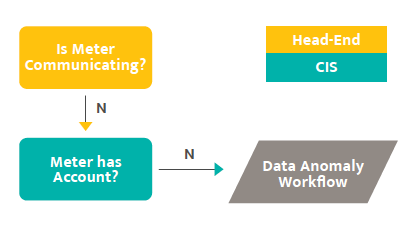
Step 2
Presuming that the meter has an account, we then check to see if the meter is part of a bigger and already identified outage, which has us referencing an outage management system (OMS). If our meter is confirmed as part of a bigger outage, we can either ignore our missing meter read or park the case and reverify once the outage concludes.
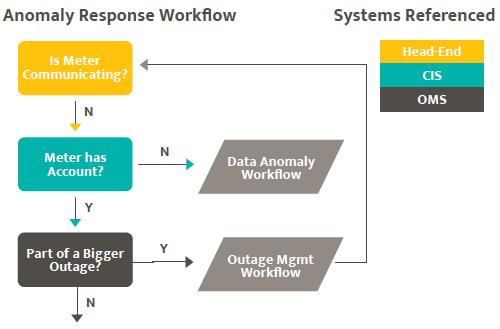
Step 3
In our example there is no outage, so we then look to see whether this is already a known problem that has an active response. This has us referencing our work order management system (WOMS). If a match is found then we would inform the response person/team of the new grid intelligence and park the case. Once the work order concludes we would reverify.
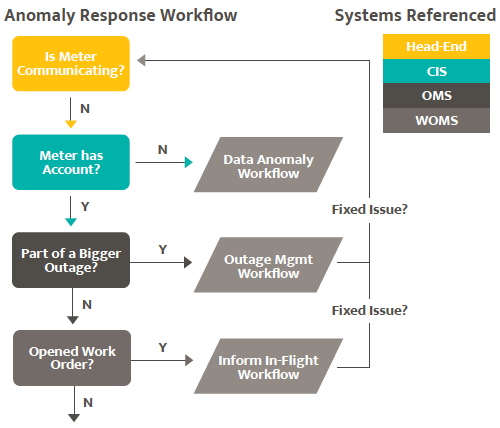
Step 4
In our case a matching work order has not been found, so now we want to assess the severity we should assign to our case based upon the risk to revenue. This has us referencing our billing system to consider the current date in proximity to the cutoff date for this account’s monthly invoice. If invoice processing is at risk, then we want to trigger a high-priority workflow to resolve the issue.
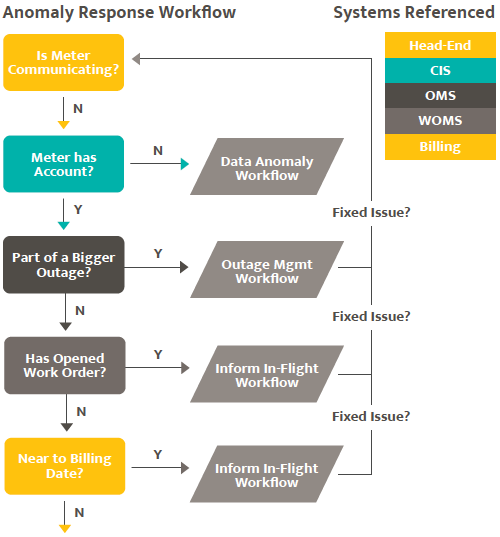
Temporal Considerations
At Trynzic we believe that the value of your grid telemety does not increase as it ages. We are on a mission to empower the “Smart Utility”, defined as people and processes informed by current grid conditions. Too often utilities are settling for a post-facto evaluation of yesterday’s conditions. People and processes informed by current grid conditions are essential to addressing the factors that increase complexity at the grid edge: electrification, curtailment programs, DER, and more.
Step 5
In our case we are not near to the invoice cutoff date, so now we proceed with problem diagnosis to narrow in on causation for the missing meter read. Establishing connectivity model context is a logical next step, which has us using our GIS (mapping) software. This allows us to determine if this condition is isolated to only this meter or if it might instead be symptomatic of a transformer or circuit issue. If one of these is determined to be the cause, then it is likely we will enter a work order in our WOMS.
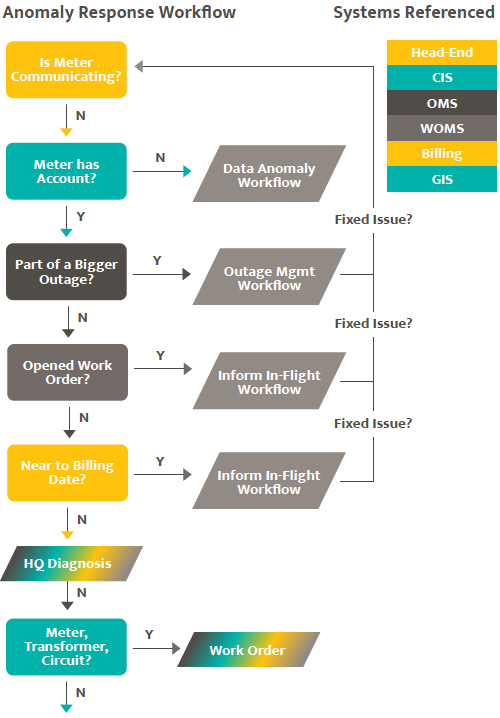
“We are Too Busy” (Typing Alt-Tab, Doing Manual Computer Tasks)
We hear this a lot and know it to be true. Software should improve productivity, but in our example use case we see that software is decidedly not working to the advantage of users. Onerous “alt-tab” experiences of switching between application silos to triage and resolve a simple issue is tragic. “Alt-tab” is not “smart”. Repetitive manual record lookups are not “smart”. None of this is productive. If you find yourself too busy to optimize processes, consider better software!
Step 6
In our case, symptoms point to the data communications network (WAN) as a potential culprit. Therefore, we reference our network management software utilities to troubleshoot connectivity to the meter, and if quick fixes do not work, then we enter a ticket into our IT service management system.
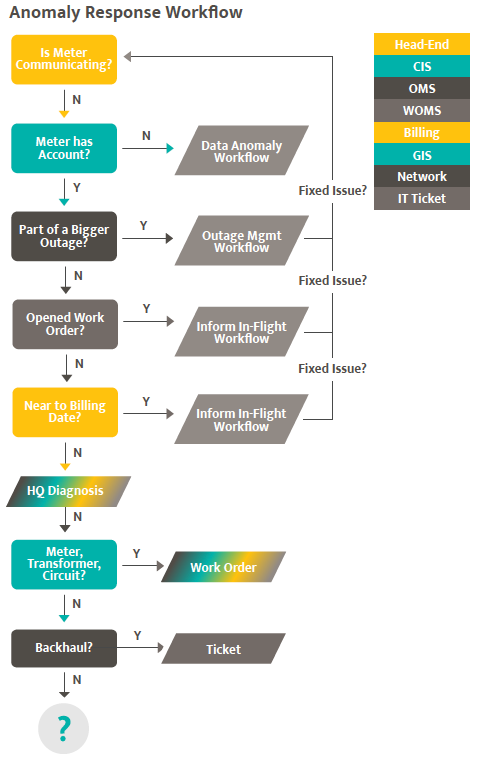
Manual Work Never Ends
Even after all those steps, this isn’t necessarily the end of the workflow. We might not yet have established causation and need to dig some more, repeating the pattern.
By now you likely get the point of this exercise, namely that data exists to serve the business, and when software fails to properly leverage data inefficiencies abound. The workflow above is common. It is also, at its core, manual. Process optimization consultants see use cases such as this and react with “digital transformation” proposals. They are not wrong, and it is the point of digital transformation to use data and software to improve business effectiveness
There is a major difference between using software to execute a mission, and software that perform its mission well. Between the Smart Meter and the Smart Grid stands the Smart Utility. If you find yourself smart meter enabled, conducting business manually with software that limits instead of empowers, and are concerned about a future where complexity at the grid-edge is rapidly increasing, then consider exploring software that puts your data to work in a way that optimizes your business processes rather than burdening your people.
At Trynzic we believe that the value of your grid telemetry does not increase as it ages. We are on a mission to empower the “Smart Utility”, defined as having business processes informed by current grid conditions. Too often utilities are settling for a post-facto evaluation of yesterday’s conditions.
Business processes informed by current grid conditions is essential to addressing factors increasing complexity at the grid edge: electrification, curtailment programs, DER, and more.